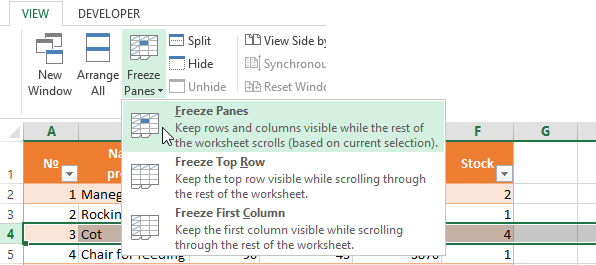
We can see that row height has been increased when compared to the previous one alternatively, we can change the row height by using the mouse. Step 4 – Now increase the row height to 25 so that the selected row height will get increased, as shown in the below screenshot. Step 3 – Once we select the ROW HEIGHT, we will get the below dialog box to change the height of the row. Step 2 – Go to the Format menu and click on ROW HEIGHT, as shown below. Step 1 – First, select the second row as shown in the below screenshot. Let’s consider the below example to change the row and column width. AUTOFIT COLUMN WIDTH– This will automatically adjust the column width.COLUMN WIDTH – This is used to adjust column width.AUTOFIT ROW HEIGHT– This will automatically adjust the row height.ROW HEIGHT– This is used to adjust the row height.Using the format menu, we can change the row and column width where we have the list option, which are as follows:
How can i unhide first column in excel how to#
This example shows how to change the row and column size by using the following examples.Įxcel row and column width size can be modified by using the format option in the HOME menu, which is shown below. In this way, we can identify the row number and column name by selecting each cell in excel. Step 4 – Now select all the names and columns to show that we have 4 rows and 2 columns shown in the below screenshot. Step 3 – Now select cell 23, where it will show the selected cell is B2 which is shown in the below screenshot with yellow highlighted. Step 2 – Once you select the cell name, John, we will get the row number and column name as A2 in the name box, which means that we have selected A column second row as A2, shown below screenshot with yellow highlighted. Step 1 – First, select the cell Name John.

In this example, we will select the Names and Age, and let’s see how the rows and column header is getting displayed. In excel, each time when we select a row or column, “Name Box” will display the specific row number and column name, which is shown in the below screenshot. In the above screenshot, we can see that names and age column have their own header name A and B, and each row has its own row number. Here we will see how to select the rows and columns. Normally, when we open a workbook, we can see that sheet contains tabular rows and columns where each row is specified by their row number and column specified by their column header.Ĭonsider the below example, which has some data in an excel sheet.
How can i unhide first column in excel download#
You can download this Rows and Column Excel Template here – Rows and Column Excel Template Rows and Column in Excel – Example#1 We can find the last column of excel by using the CTRL+RIGHT NAVIGATION ARROW KEY, or else we can use the horizontal scrollbars to go to the end of the column. We can find the last row of excel by using the keyboard shortcut key CTRL+DOWN NAVIGATION ARROW KEY, or else we can use the vertical scrollbars to go to the end of the row.

In this example, we will see how to navigate rows and columns with the below examples. The column in excel ranges from A to XFD, which is highlighted in red mark. Rows in excel range from 1 to 1048576, which is highlighted in red mark In Microsoft Excel 2010 and the latest version, we have row numbers ranging from 1 to 1048576 in 1048576, whereas the column ranges from A to XFD in a total of 16384 columns which is shown in the below screenshot. In Excel, each column is named by its header, which shows the column header horizontally at the top of the excel sheet.which will be shown normally in all excel sheets, which are shown below. Whereas we can find the column in excel, which can be identified by the column header like A, B, C.As we can see in the above screenshot that each row can be identified by their row numbers like 1, 2, 3 etc.In excel, we can find each row by its row number, which is shown in the below screenshot, which shows vertical numbers on the left side of each sheet.Excel functions, formula, charts, formatting creating excel dashboard & others


 0 kommentar(er)
0 kommentar(er)
